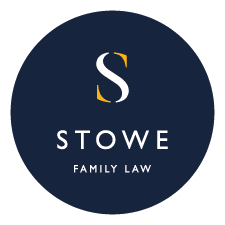I think it is well known that the whole field of pensions and pension provision can be extremely complicated. And that is without adding in the additional complication of divorce.
Since the year 2000 family judges and lawyers have had to grapple with pension orders on divorce. Prior to that, the court had no power to deal directly with pensions. Of course, pensions were always relevant when considering a divorce settlement, but before 2000 there was really only one way of dealing with them, i.e. the ‘offsetting’ arrangement, whereby the spouse without the pension would be compensated by having the lion’s share of other assets. That was far from satisfactory, particularly when there weren’t enough other assets available to compensate the non-pension holding spouse, hence the introduction of pension sharing and pension earmarking (now known as ‘attachment’) orders.
But this led to a problem. Judges and lawyers had to struggle to understand a large and complicated new field of expertise in which they had no experience, and no time for more than a cursory amount of training. I remember myself how difficult it was to get to grips with it when I was practising.
And it is absolutely essential that judges and lawyers know what they are doing. Pensions can be one of, or even the most, valuable assets in a marriage (in many cases only the matrimonial home itself is more valuable), and ensuring that both parties have proper and appropriate provision is critical.
Obviously, the lack of expert knowledge can lead to inappropriate orders. But it can also lead to inconsistency between courts and judges, making it even more difficult for lawyers to advise.
The need for proper guidance in this area is quite clear. And now at last, as I mentioned here on Friday, we have it. The Pension Advisory Group, a multi-disciplinary group of professionals specialising in financial remedies and pensions on divorce, jointly chaired by Mr Justice Francis and His Honour Judge Edward Hess, and supported by the President of the Family Division and the Family Justice Council, has published a guide to the treatment of pensions on divorce.
And what a guide it is. I am not qualified to give it any sort of review, particularly as I have not been practising for some ten years, but to my inexpert eye its 176 tightly-packed pages seem to cover most if not all that judges and lawyers need to know when dealing with pensions on divorce. I certainly wish I had had something similar nineteen years ago!
The guide is divided into 14 parts, covering everything from the essential but not always straightforward task of computation of pension assets, through dealing with pensions fairly on divorce, to taxation and international issues. And it deals with all types of pensions, including a section devoted to state pensions. The guide is topped off with no fewer than 24 appendices, including a very useful glossary (pensions, like the law itself, are rife with impenetrable technical terms), a procedural guide, and just about every conceivable reference anyone dealing with pensions on divorce should require.
The guide really does seem to be the complete ‘one-stop shop’ for anyone seeking the necessary information to deal properly with pensions on divorce. All divorce practitioners should definitely read it, and keep a copy on their virtual bookshelf (or, if they are so inclined, run off a printer-friendly copy).
But what about litigants in person? It is easy to imagine that many people who may be ‘entitled’ to a pension order may not be able to afford legal representation. The idea of them struggling to ascertain and then realise their entitlement does not paint a pretty picture. Would this guide help them?
Well, the guide is certainly written with the professional reader in mind. I can see, however, that a determined and reasonably skilled litigant in person could garner a great deal of useful information from the guide, but attempting to deal with such complex matters on their own is still an extremely risky endeavour. One might think that there might be a market for a ‘lay person’s guide to pensions on divorce’, but putting such a difficult subject into terms that a layperson could reasonably be expected to understand would be a monumental, and possibly even impossible, task.
If you do wish to have a look, you can find the full guide here. There is also a briefer, and therefore more easily digestible, Executive Summary, here.
